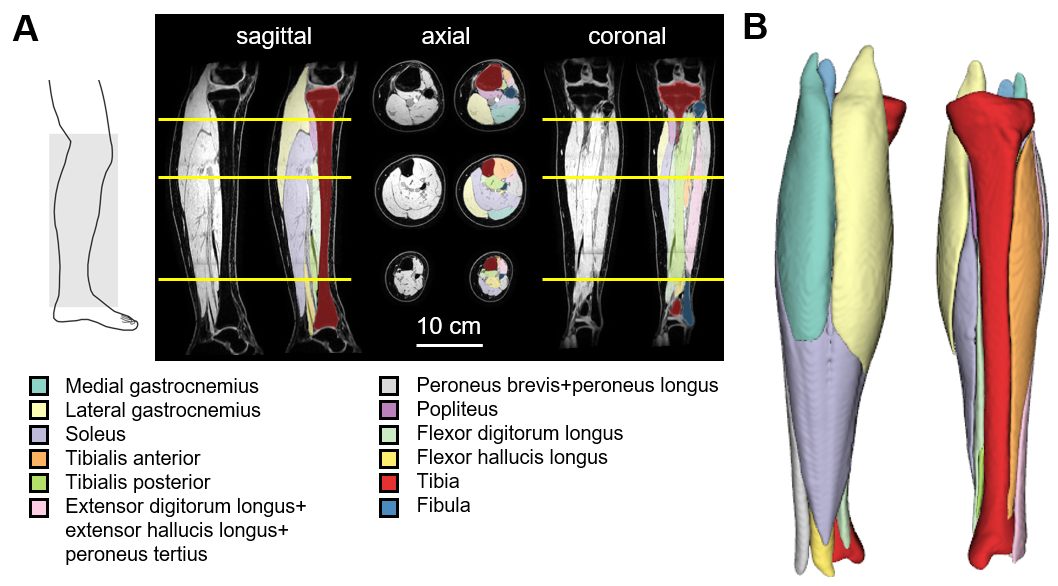
MRI Analysis Reveals Growth Trends in Lower Leg Muscles of Children Aged 5-15
Researchers at NeuRA Imaging have developed reference curves for lower leg muscle growth in children aged 5 to 15 years, providing a benchmark for identifying impaired muscle development, particularly in children with cerebral palsy.

Researchers and clinicians have long been interested in measurements of physical development during childhood. For instance, reference curves for body height and weight, more commonly known as “growth charts”, are widely used in public health programs.
Through research conducted at NeuRA Imaging, researchers have created reference curves for the size of individual lower leg muscles in children aged 5 to 15 years, and have shown how these curves can be used to identify impaired muscle growth in children with cerebral palsy.
The reference curves for muscle growth were based on detailed measurements of muscle volumes from MRI scans of the lower legs from 200 typically developing children aged 5 to 15 years and 8 infants aged under 3 months.
It took the researchers 6 years to recruit participants and collect all the data, and data analysis was just as challenging: manually segmenting many muscles on dozens of image slices from hundreds of scans would be highly impractical.
The researchers developed custom-built deep learning methods to segment individual lower leg muscles, allowing for detailed measurements of the volumes of individual muscles from large numbers of children.
The reference values of muscle volumes during typical childhood development were subsequently used to demonstrate that many children with cerebral palsy – the leading cause of childhood physical disability in Australia – have muscles that are small for their age (below the 10th centile for typical muscle development). The combined volume of all lower leg muscles was small for their age in 56% of the 78 children with cerebral palsy who participated in this study. And at least one muscles was small for their age in 80% of children with CP.
The reference curves presented in the current study were based on one scan per child (cross-sectional data), but most children have now received multiple scans (longitudinal data) to investigate how muscles grow in individual children. The researchers hope to publish these findings in the coming year.
Read the full article here: https://doi.org/10.1073/pnas.2416660122
Recent Comments